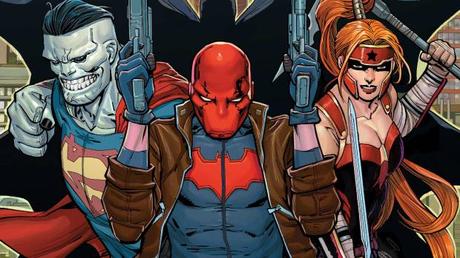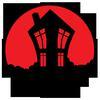The Pull List: DC's Dark 'Trinity'
The Pull List started as a weekly spotlight on interesting new releases, but it has since redirected that spotlight to random thoughts about characters, storylines, and other comic book elements.What does it take to be Superman? That's an easy question to answer. You could ignore the capitalization, just answer more generically, and still get pretty damn close to answering in context of the original character. Wonder Woman too. Being created in 1938 and 1942 respectively gave them first choice on the superhero code names that make their larger ideals very clear from the jump. Even Batman, whose name is much more specific that the other two, has entered our cultural consciousness so influentially that he might as well be named....Megaman? Ultraman? Is there a combination of generic signifier of moral righteousness and gender identity that hasn't been taken?
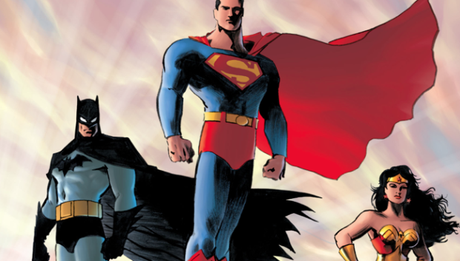
Whether by design or manifest destiny, this has made Superman, Wonder Woman, and Batman the figureheads of DC Comics' superheroism, known colloquially as The Trinity. They set a bar, and all the other DC characters are judged against them. Thus, DC is often perceived as an ideological point of view, while their major competitor, Marvel and their 60s-era heroes, are perceived from more of a humanistic point of view. I don't know if that's accurate if you were to take stock of either of their rosters, and those aren't even that diametrically opposed. However, that is the general impression between the two. That is more important in context of this essay, because I think DC is currently doing a version of The Trinity that reflects what Marvel might have done with them had they invented them first. It's called Red Hood and the Outlaws. And it's great!
The outlaws are led by Red Hood, aka Jason Todd, former Robin who was killed by the Joker and then brought back by whatever reality warping event is the most convenient. For so long, Jason represented Batman's biggest failure, so when he returned, he couldn't just recommit to Batman's way. So, he uses guns and is not against killing. Since his resurrection, DC has struggled to find him a home that wasn't just full-blown villain. They have slowly repaired the relationship between Jason and Batman since the beginning of the New 52. When Batman needed help against Terminus, Jason showed up with the rest of the Robins. When Bats needed someone to pose as "Batman, Inc" member, Wingman, Jason stepped up. And when Bats and Jason got wind of a possible political assassination, Bats trusted Jason to take care of it leading to their mutual agreement to stay out of each other's way, thus the current iteration of the Outlaws.
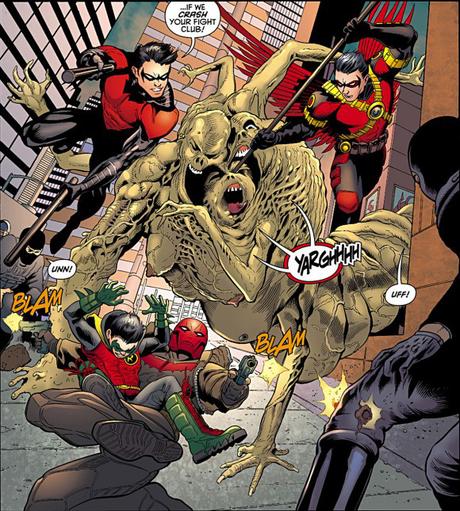
Wonder Woman's Outlaw stand-in is Artemis. She is an Amazon but not from the island of Themyscira. She is from an Egyptian tribe of Amazons called the Bana-Mighdall, who had emigrated there from Greece. Classically, she is Wonder Woman with a bad attitude. Sometimes a rival, sometimes an ally. But this new version is much more motivated. She is on the search for the Bana-Mighdall's secret weapon, an enchanted bow called the Bow of Ra. It is traditionally trusted to the Shim'Tar, Bana-Mighdall's chosen champion, a role Artemis always dreamed of being chosen for. However, the role ended up going to Artemis' closest friend, Akila. Ultimately, Akila was corrupted by the bow's immense power forcing Artemis to mercy kill her.
She crossed paths with Red Hood while they were both investigating Black Mask's black market arms deal. She believed that Black Mask's big ticket weapon could be the Bow of Ra, but the weapon ended up being a lot more dangerous, Bizarro, a Superman clone. Lex Luthor originally tried building his own army of Supermen, but he could never get it right. This half-cooked version of Superman has most of his powers (except freeze vision instead of heat vision). He also has a zombie like white skin, the vocabulary of a caveman, and the demeanor of a toddler. Typically, Bizarros are prone to Hulk-like temper tantrums, but this one seems a hell of a lot more innocent.
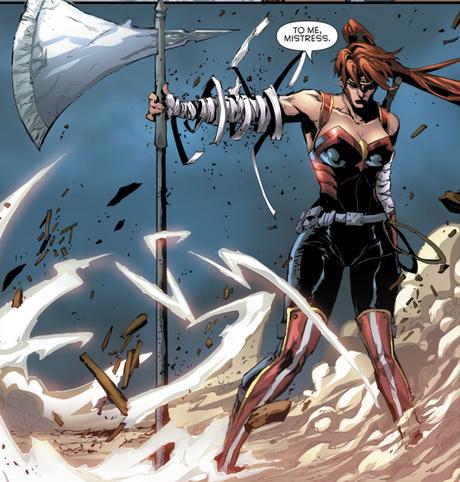
Together, they create a very unprecedented surrogate family. Jason, for instance, is not just DC's Punisher or simply Batman but with guns. He is like a traumatized Peter Parker treating violence as a crutch. You can tell he knows he needs to be better because the ghost of his former self, whose face was caved in by the Joker with a crowbar, is still following him around (quite literally in one arc). He is also coming to grips with the fact that he can't do this alone after cutting loose his former team of outlaws: Starfire and Arsenal.
Like Jason, Artemis is running from her own ghosts too (metaphorically). This one is the life of her best friend that she was forced to take, and how taking it also means losing the Bow of Ra to the winds of faith. It is a magical force to be reckoned with that she needs to keep from falling into the wrong hands, but she also faces the fact that taking on the burden of the bow might corrupt her as it did Akila.
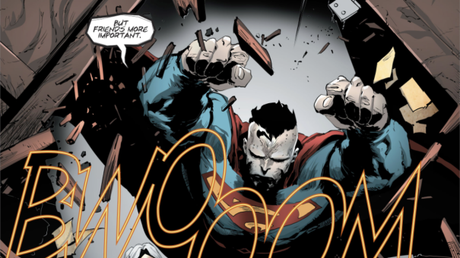
Stuck in the middle of the two of them is Bizarro, who essentially starts off like their adopted child. He is their "Robin," the wide eyed avatar of humanity's innocence that they not only need to protect from those that would take advantage of him but equip him with the ability to morally use his powers just as Superman would. At one point, Luthor steps in and experiments on him, much to Jason and Artemis' chagrin, expanding Bizarro's mind to genius levels. It is a Flowers of Algernon level of success with an extremely sophisticated, big-brained Superman cursed with the knowledge that it won't last forever, and he'll return to his child-like intellect at any moment.
I was not going to give this version of Red Hood and the Outlaws a chance. The first iteration was nothing special, and rebooting the series with what looked like the "90s X-Treme" versions of DC's flagship capes is not very inspiring. However, the book proved to be the complete opposite. It took the overall concept of DC's Trinity, replaced their physical weaknesses with subversive personality flaws, and gave them the opportunity to become better people by helping each other be better heroes.
